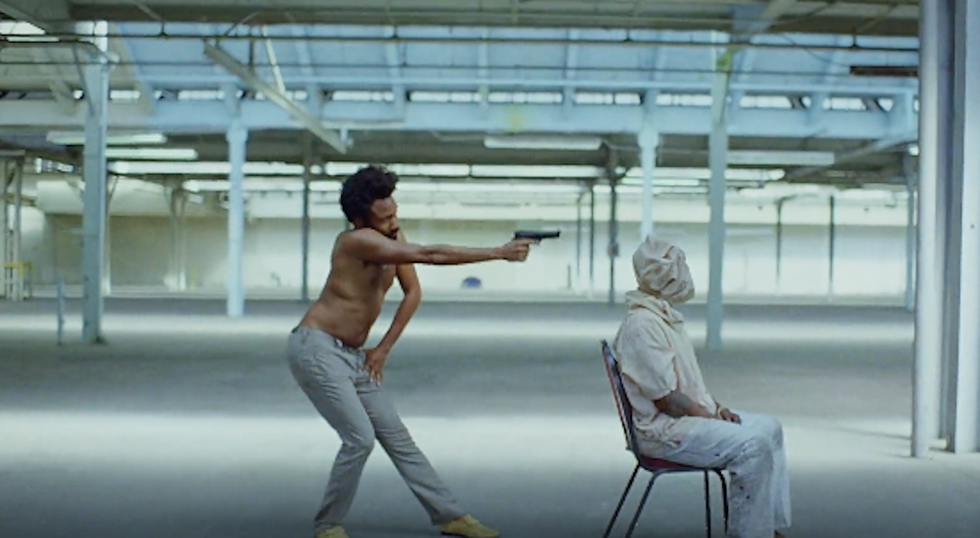When there is any mention of Childish Gambino in the media, most individuals would make immediate reference to widely known hits such as “Redbone” and “3005”.
As the mass media and public tend to glorify this figure known as Childish Gambino, they often fail to recognize the great ideas of a man who goes by the name of Donald Glover.
Glover is the modern- day Renaissance man. Starting out as a young student attending New York University, he began his career as a writer under Tina Fey’s wing at the NBC sitcom "30 Rock" and even produced his own mixtapes. Since 2012, he has become an actor appearing in several films, a director, singer/songwriter, stand-up comedian, and most importantly, an activist.
Following the considerably recent tragedies in Parkland, Florida and several other mass shootings across America, Glover decided to use his voice as an artist to raise awareness to the current political climate that is drowning in gun violence, police brutality, and other significant social issues. Depicting what it is truly like to be a Black man living in America, Glover released his music video for “This Is America” on May 5th, 2018 after his popular debut on Saturday Night Live. Immediately the video received outstanding attention across all social media platforms.
The video begins by showing a single chair, where a man starts to play a joyous acoustic tune backed by the sounds of rhythmic chanting. Glover appears standing in the background where he will eventually join in dancing. Suddenly, this happiness is halted by the abrupt sound of gunshots and the visual of Glover shooting the man from the previous scene who is now tied up. The speed and emotion change immediately in the next line. Glover hands the gun over and moves on to sing “This Is America, don’t catch you slippin’ now. Look what I’m whippin’ now.” He is followed by a group of young African American students who dance along with him, ignoring all that goes on in the background— or perhaps the social climate of America.
In the initial release of the video, social media responded accordingly. Yet, as a few weeks have passed and the trolls of the internet emerge, the conversation has begun to evolve. Once a form of artistic expression breaking down barriers of racial injustice, now the video has been circulating on Twitter as memes— and people are furious.
Sure, Donald Glover’s dancing does match impeccably well to Carly Rae Jepsen’s “Call Me Maybe”. Although, this use of social media is not spreading any messages of awareness or possible hope, but rather contributing more ignorance. This is the entire point of Glover’s video. He depicts throughout, that the struggles a black man goes through on a daily basis are often ignored due to the shift of attention in Black culture in the media and how people would rather acknowledge that than actual racial injustice. Glover also uses this as an opportunity to express the limitations that are placed on him as a young Black artist in a very troubled society.
Before the memes reached Twitter, Glover basically predicted this reaction in his music video. With so many serious tragedies, attention is often focused for a week or less and then the media finds something lighter to look at. We dismiss so much as a culture— as a human race, and therefore that is why there is no change.
If one really spent the time to deeply analyze the song and video, they could understand just how influential and important this message is to the time we live in. There are so many symbols and remarks to current events that have been unrecognized in the news.
Several references are made to hate crimes such as the shooting of 10 church members by the white supremacist, Dylan Roof in Charleston. Glover decodes human values by showing in the first scene how a gun is carried away by cloth, an example drawn to show how we protect gun rights more than actual human lives. Towards the end of the song the frame zooms out and we hear the line “Get your money, black man” repeatedly. Once again we see all of this turmoil stirring in the background being completely and utterly ignored.
All turns to a black abyss and we see Glover running down the dark alley.
“You just a Black man in this world
You just a barcode, ayy
You just a Black man in this world
Drivin' expensive foreigns, ayy
You just a big dawg, yeah
I kenneled him in the backyard
No proper life to a dog
For a big dog”
These lyrics and final scene bring the video to a sincere and very disheartening ending. As these words slowly trail in Glover’s footsteps, it is seen in the background a blurry vision of an all-white crowd chasing him. It ties together all of the themes of this song and shows that racism is alive and well in today’s America.
What we can take away from this music video is resilience and the pertinacity to raise our voices about the inequality in our country. Instead of residing on Twitter, use your voice to help others that may not have the same privileges that you do. Memes are not going to solve anything. They may provide a short-term sense of humor, but in reality, they are depreciating the seriousness in the message the artist is trying to portray.
Afterall, Donald Glover emphasized this point throughout the video, so let us be the change and not continue that pattern.
















